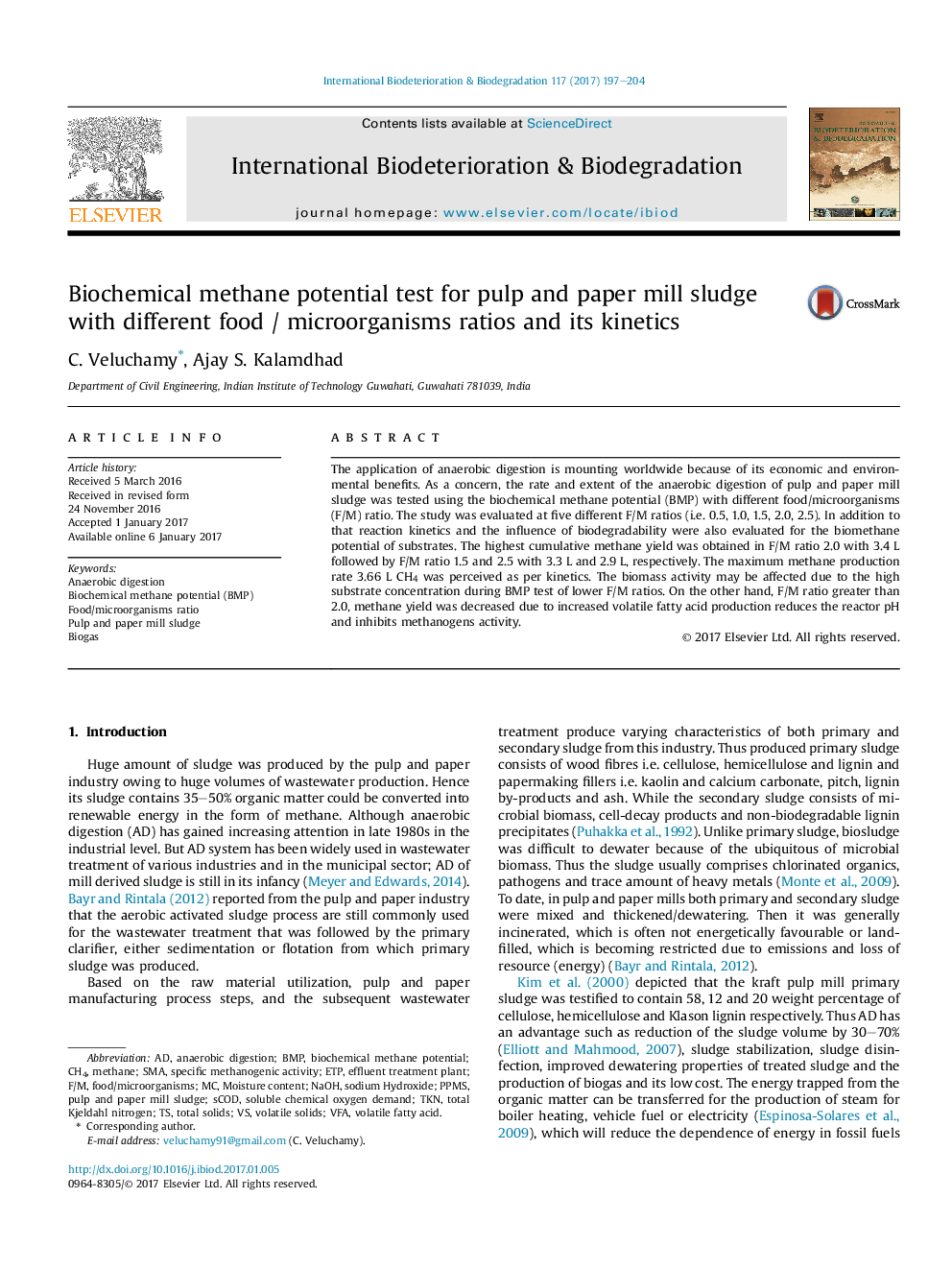| کد مقاله | کد نشریه | سال انتشار | مقاله انگلیسی | نسخه تمام متن |
|---|---|---|---|---|
| 5740506 | 1616300 | 2017 | 8 صفحه PDF | دانلود رایگان |
- Anaerobic digestion of pulp and paper mill sludge was evaluated.
- The effect of cow dung on methane production was demonstrated by BMP assays.
- A unique strategy to improve degradation with different F/M radio 0.5 to 2.5 was investigated.
- Cow dung act as the active inoculum that increased methane yields.
The application of anaerobic digestion is mounting worldwide because of its economic and environmental benefits. As a concern, the rate and extent of the anaerobic digestion of pulp and paper mill sludge was tested using the biochemical methane potential (BMP) with different food/microorganisms (F/M) ratio. The study was evaluated at five different F/M ratios (i.e. 0.5, 1.0, 1.5, 2.0, 2.5). In addition to that reaction kinetics and the influence of biodegradability were also evaluated for the biomethane potential of substrates. The highest cumulative methane yield was obtained in F/M ratio 2.0 with 3.4Â L followed by F/M ratio 1.5 and 2.5 with 3.3Â L and 2.9Â L, respectively. The maximum methane production rate 3.66Â L CH4 was perceived as per kinetics. The biomass activity may be affected due to the high substrate concentration during BMP test of lower F/M ratios. On the other hand, F/M ratio greater than 2.0, methane yield was decreased due to increased volatile fatty acid production reduces the reactor pH and inhibits methanogens activity.
Journal: International Biodeterioration & Biodegradation - Volume 117, February 2017, Pages 197-204
